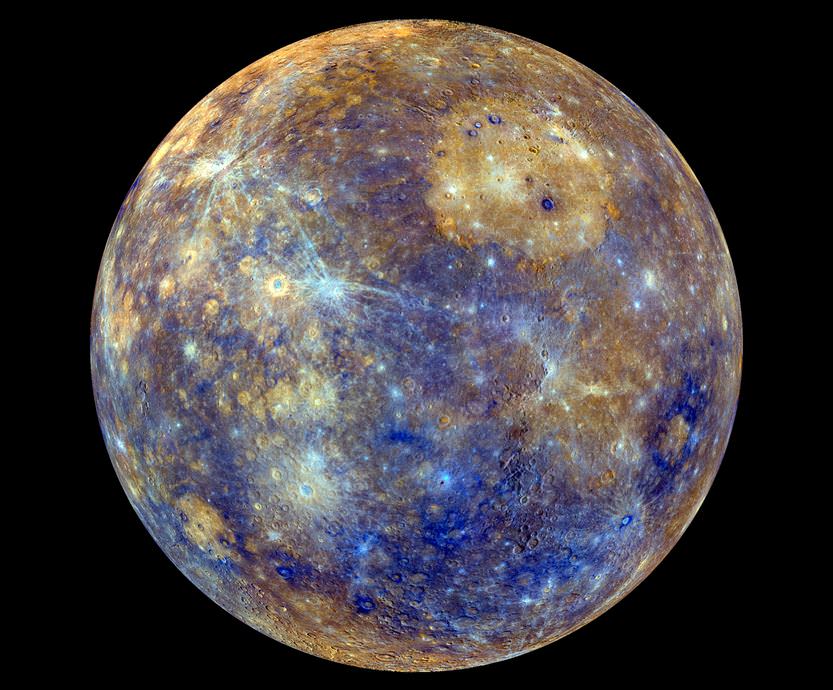The
MESSENGER mission
has now mapped the entire surface of planet Mercury -- and this is the first time this has even been done. MESSENGER is the first spacecraft to be in orbit of Mercury, and has been there since 2011, with a couple of flybys starting in 2008 as it slowly looped its way into orbit. The seven scientific instruments and radio science investigation on the spacecraft have provided an entirely new view of the planet.
This colorful view of Mercury is, of course,
not
what Mercury would look like to the human eye.
It was created by using images from the color base map imaging campaign during MESSENGER's primary mission. These colors enhance the chemical, mineralogical, and physical differences between the rocks that make up Mercury's surface, allowing scientists to figure out all the different minerals that are on the planet's surface.
The complete map of Mercury was completed and released in February of 2013, and is made of thousands of images taken by MESSENGER. The spinning video map shows Mercury as, really, we've not seen it before, and it is fun to watch features like large rayed craters and basins spin into view.
The MESSENGER team explained the colors:
Young crater rays, extending radially from fresh impact craters, appear light blue or white. Medium- and dark-blue areas are a geologic unit of Mercury's crust known as the "low-reflectance material", thought to be rich in a dark, opaque mineral. Tan areas are plains formed by eruption of highly fluid lavas. The giant Caloris basin is the large circular tan feature located just to the upper right of center of the image.
You can see an image of the other side of Mercury
here,
and the complete gallery of science images and mosaics
here.
 Universe Today
Universe Today
